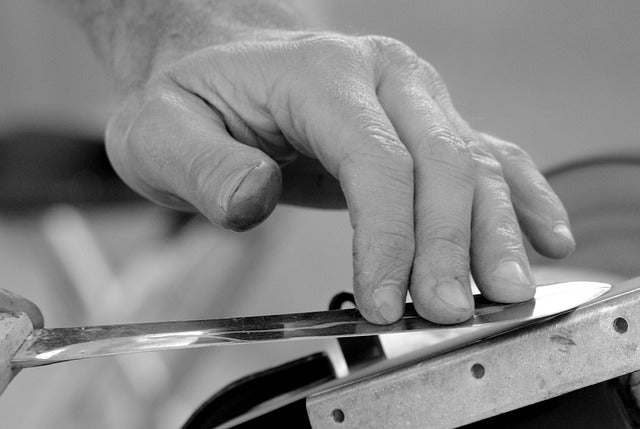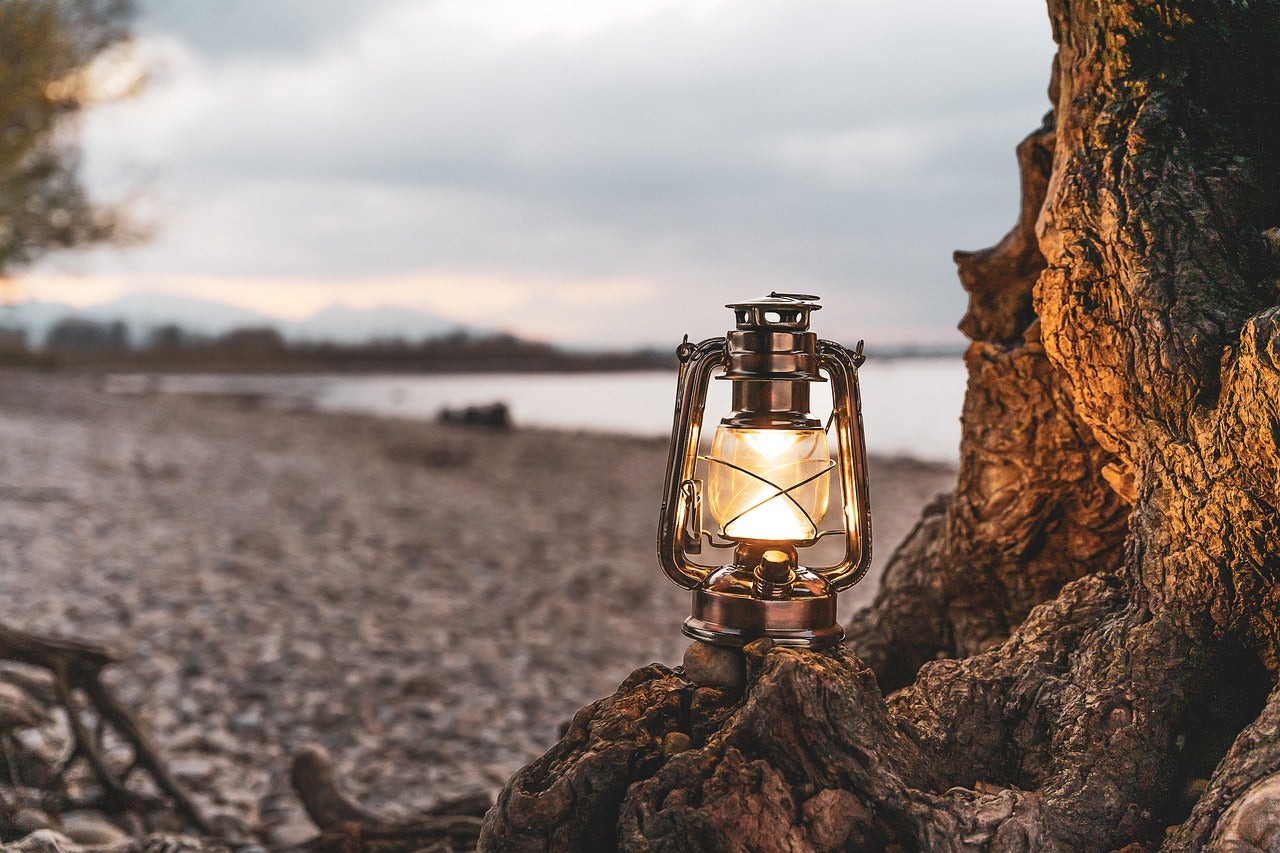
Maintaining Knife Hygiene and Sharpness
To ensure your knife remains sharp and pristine, and ready to go the next time you need to use it, remember to clean it thoroughly after each use, keep it dry, store it properly, and regularly maintain its edge through honing and sharpening.
Caring For your Knife
- Frequent Cleaning: After each use, rinse the blade with plain water and ensure it is thoroughly dried.
- Ongoing Cleaning: While in use, periodically wipe the blade, especially when cutting into acidic items to prevent permanent dark spots caused by oxidization.
- Handle Care: Regularly clean and dry the handle. Even if it's water-resistant, this practice will extend its lifespan.
Keep Your Knife Dry
- Avoid Submersion: Never leave your knife in the sink or submerged in dishwater to prevent quick dulling and rust.
- Skip the Dishwasher: Dishwashers can harm the knife's steel and handle, so hand wash only.
Store Your Knife Properly
- Magnetic Rack Storage: The ideal storage spot for your knife is a magnetic rack.
- Drawer No-Go: Never store your knife loosely in a drawer with other utensils as it can quickly dull the blade.
- Corrosion Prevention: If storing the knife for an extended period, apply mineral oil to the blade with a soft cloth to prevent corrosion.
Maintaining Sharpness
- Regular Honing: To preserve the razor-sharp edge, hone the blade weekly using a leather strop or honing rod.
- Sharpen When Needed: When your knife requires sharpening, use an oil or water sharpening stone. These methods may take some practice but are effective.
- Sharpening professional knives: requires the use of specialized tools such as specific stones or sharpening devices. Electric sharpening machines, IKEA manual machines, grinders, and other non-specialized devices should not be relied upon as substitutes for high-quality sharpening, as they can sometimes harm the knife's cutting edge. To achieve the best results, it is advisable to invest in an affordable hand-crafted sharpening kit that includes multiple water stones. This kit provides the optimal solution for maintaining the sharpness and longevity of your professional knives.
A blunt knife poses a potential hazard, so it's essential to maintain its sharpness. A general rule of thumb is to regularly touch up or hone your blade using a fine ceramic rod or fine-grit stone before it becomes excessively dull. This practice prevents the need for more time-consuming, aggressive abrasive methods and ensures your blade remains in excellent working condition for an extended period.
There are various techniques available for sharpening bladed tools. Options include whetstones, benchtop power sharpeners, angled ceramic rods, diamond stones, leather strops, and fixed-angle sharpeners—there's a wide array of high-quality tools on the market to suit your specific requirements. Work Sharp sharpeners, in particular, offer some of the finest options for various sharpening needs.
When sharpening, it's crucial to consider the blade's intended purpose and choose the appropriate edge angle to optimize cutting performance for the task at hand. For instance, a low edge angle of 15° is ideal for achieving high sharpness and is suitable for kitchen knives, while a higher edge angle of 25° is better suited for general-purpose outdoor knives. Keep these recommendations in mind when selecting your angle:
Outdoor Knives:
- Hunting knife for light use and detail cutting: 20°
- Hunting knife for heavy use and cutting: 25°
- Camp/survival knife for extensive use, typically fixed blades: 30°
Pocket Knives for Everyday Carry (EDC):
- Heavy use: 25°
- Light use: 20°
Kitchen Knives:
- Western style: 20°
- Eastern style: 15°
Furthermore, the choice of abrasive grit depends on the initial condition of your blade edge—how dull or damaged it is. Coarser grits remove more material, so for reprofiling or shaping an edge, begin with coarse grit materials like a 320-grit diamond stone and progressively move to finer grit abrasives for sharpening and honing. For general sharpening, a 600-grit diamond stone is suitable, followed by the use of a fine ceramic for honing the edge. To achieve a mirror polish, complete the process by using a leather strop with a polishing compound.
Collections
-

Illumination
"Illuminate Your Adventures with Our Premier Lighting Solutions Collection. Discover the power...



